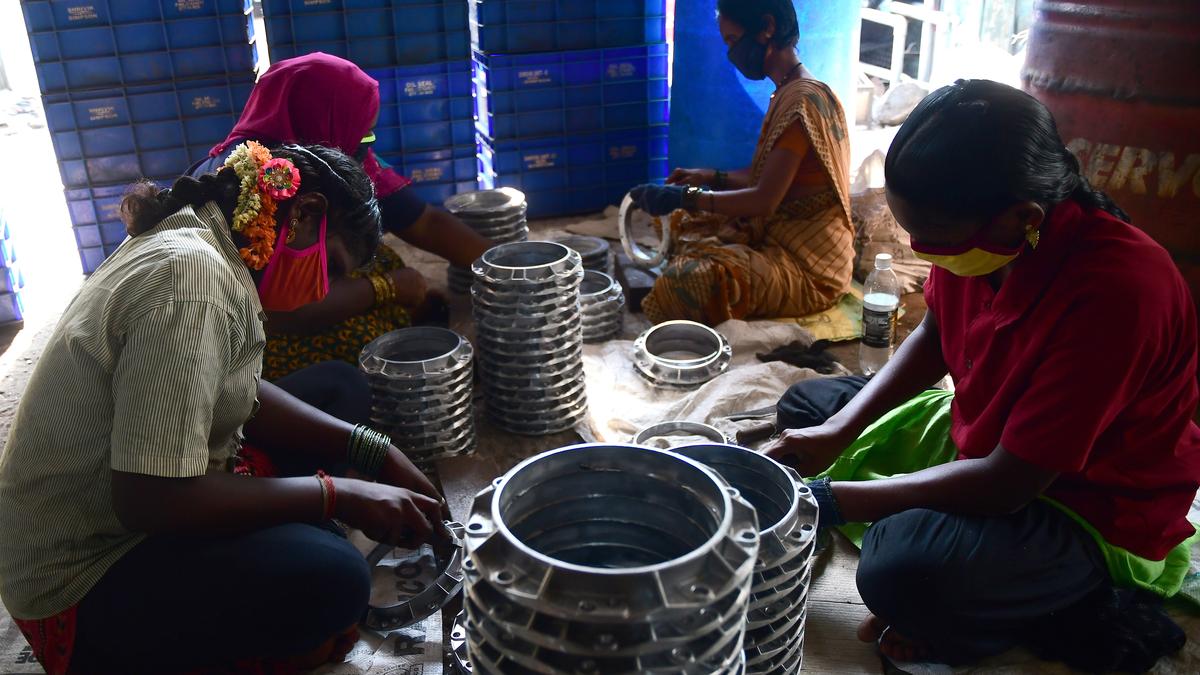Women workers seen working inside a MSME Industrial Unit, Ambattur
| Photo Credit: K. PICHUMANI
Reserve Bank’s executive director Neeraj Nigam on July 5 said low labour force participation among women is a barrier to financial inclusion efforts and also to broader economic growth.
He said there is also a need to up the credit supply to women, pointing out that only 7% of the overall outstanding loans to micro, small and medium enterprises are to women-led businesses.
“One significant barrier for financial inclusion and indeed to economic growth and development is more participation of females in economic activities,” he said, pointing out that official data suggested female labour force participation at 32.8 per cent in FY22, as against over 77% in men.
Women constitute only 7% of the outstanding credit to Micro, Small & Medium Enterprises (MSMEs), he said, adding that this is very low when compared to nearly a fifth of the MSMEs being women-led.
Speaking at the ‘Financing Women Collaborative’ conference organized by Niti Aayog and Transunion Cibil here, Nigam expressed satisfaction on the access to financial services front, pointing out that the Pradhan Mantri Jan-Dhan Yojana (PMJDY) scheme and social security transfers have helped.
With the challenges on supply taken care of, he said there are issues on the demand side which warrant attention.
There are structural issues like low level of capital, labour participation, societal norms like restricting women from inheriting property that limit their ability to show collateral for lending and also lower access to education and training.
Nigam also said that there is some “stereotyping” of women borrowers by financiers as well, like them being considered as higher risks which leads to higher interest rates, greater insistence on collateral or outright rejection of loan applications.
The RBI ED also flagged some “behaviourial issues” among women borrowers including them being more risk averse, less confident in negotiating loan terms and are less likely to apply for new loans because of the fear of rejections.
He said the priority sector lending (PSL) mandate has emerged as a viable business model for banks and microlenders, and the “constraints” are on the demand side.
After narrowing down on the challenges, the RBI has started initiatives on financial inclusion like opening 2,400 centres for financial literacy at the block level by partnering with nonprofits and also made it compulsory for lead banks to have a literacy centre in each district, he said.






)
